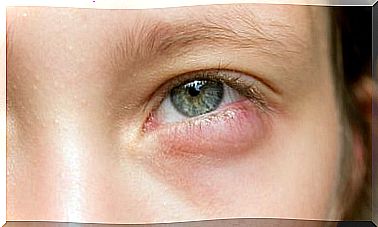What Is Addison’s Disease?
To speak of Addison’s disease is to speak of adrenal insufficiency. It is not a common pathology. The incidence, or new cases, is 0.83 per 100,000 people. The prevalence, or number of cases in a general population, is four to six cases per 100,000 people.
Long ago, the most common cause of the disease was tuberculosis, which affected the adrenal glands. Currently, as there is greater control over tuberculosis, the most frequent cause is ‘idiopathic’: an autoimmune origin in which the body attacks its own organs.
Although symptoms can appear at any age, it is most common between the ages of thirty and eighty, peaking at forty. Like many endocrine diseases, it is more common in women than in men.
Causes of Addison’s disease
We have said that to speak of Addison’s disease is equivalent to adrenal insufficiency; then we must understand what the adrenal glands are and what function they perform.
There are two adrenal glands and they are located above each kidney, in the abdominal cavity. Internally, each of them is made up of two parts:
- Adrenal medulla: it is the internal part of the gland and is responsible for forming hormones with a structure similar to adrenaline.
- Adrenal cortex: it is the outer layer of each gland and has the function of forming corticosteroid hormones. Among the corticosteroids formed here, we can name:
- Glucocorticoids : cortisol is the most relevant, with metabolic, inflammatory and stress response functions.
- Mineralocorticoids : Aldosterone is the main one, regulating sodium and potassium in the body.
- Androgens : male sex hormones.
In Addison’s disease, the problem lies in the destruction of the cortex of the adrenal glands. Without a cortex, the body lacks sufficient amounts of cortisol and aldosterone. The symptoms of the pathology are explained, precisely, by the lack of these hormones.
Are causes of the destruction of the adrenal cortex :
- Isolated autoimmune – The body specifically targets the adrenal gland with antibodies.
- Autoimmune poliendocrine syndrome: An autoimmune disease in which the body attacks different glands at the same time.
- Infections: fungal infection or tuberculosis.
- Tumors: of the gland itself or metastasis of cancers originating in other organs.
Symptoms of the disease
In Addison’s disease, symptoms appear insidious. That is the most common form of presentation. Slowly, different signs become apparent but this leads to confusion in the diagnosis. Some symptoms go unnoticed or blend in with those of other pathologies.
The problem in the delay of diagnosis is the seriousness that the evolution of Addison can take, putting the life of the person suffering from it in serious danger. Among the most frequent symptoms are:
- Loss of appetite
- Hyperpigmentation of the skin : darkening in certain areas.
- Low blood pressure.
- Hypoglycemia : low blood sugar.
- Asthenia : fatigue, lack of strength.
- Muscle pains.
- Depression.
A special presentation of the disease is the acute crisis, where several symptoms of those previously enumerated appear suddenly. It is an acute adrenal insufficiency. The outcome can be fatal shock if not treated properly and right away. The Addisonian crisis is a vital emergency.

Diagnosis and treatment
The way to diagnose Addison’s disease is through the measurement of hormone levels. The simplest test is to measure the circulating cortisol and ACTH hormone in the person’s blood early in the morning. In the Addison patient, ACTH is high and cortisol is low.
More specific, it is stimulating natural cortisol with an artificial hormone ACTH and measuring its levels in the blood before and after stimulation. In people with Addison’s disease, cortisol does not increase after ACTH stimulation.
It is essential that, upon suspicion, the doctor requests a first blood cortisol measurement. If the results are doubtful or inconclusive, the ACTH stimulation test should be done a second time to aim for diagnostic confirmation.
Along with this etiological tracing, the professional will request the measurement of other biochemical parameters that may be altered.

Once the disease is diagnosed, the basic treatment will consist of artificially supplanting the missing hormones.
Synthetic glucocorticoids are indicated to replace cortisol. Aldosterone is supplanted by similar steroids, such as fludrocortisone. Finally, androgen deficiency can be treated with a homologue such as dihydroepiandrosterone.









